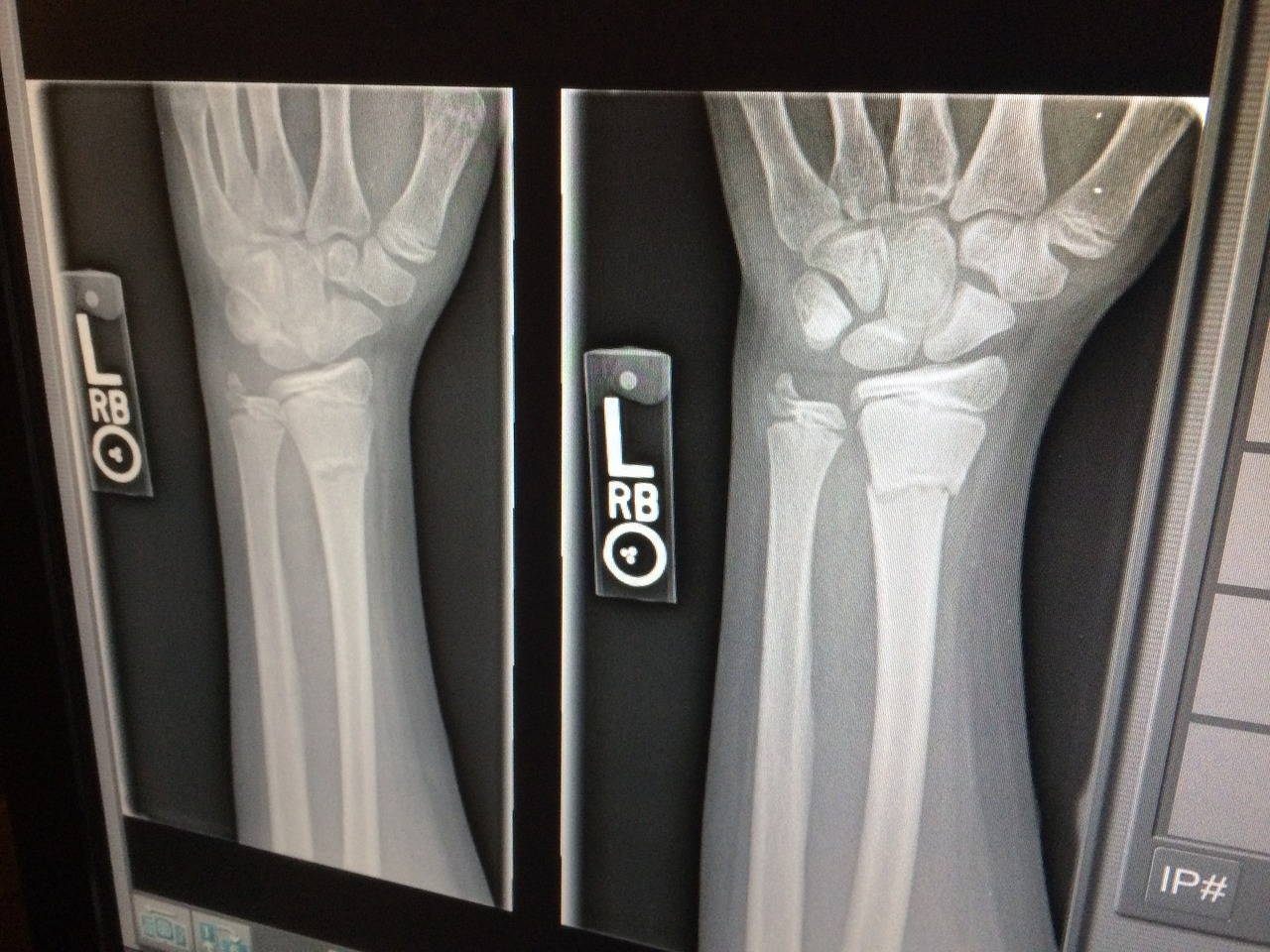
No perfect radiology residency program exists for radiology residency applicants, and no one size fits all. Each candidate has their own needs, wants, and learning style. And each program has its positives and negatives. Therefore, each applicant should strive to match with the appropriate residency. In doing so, the positives of the program should fit well with the applicant’s needs. And, the negatives should be minor and not detract from the overall radiology resident experience.
My goal for today is to discuss the essential ingredients for choosing a radiology residency. Most online overviews do not address many of these crucial factors to look for in a radiology residency program. So, I thought it was critical to include them. Included in my discussion will be of the highest importance to most minor importance: residency culture/hierarchy, location/proximity to family/friends, intimate insider knowledge of a program, rotations/equipment/procedure volume, university vs. community programs, private vs. academic run departments, graduating resident fellowships, conferences, research, mentorship programs, and board passage rates.
In the end, the overall residency experience will allow you to become a great radiologist. So, I will put it all together at the conclusion to help you to make a final decision. To do this, I have assigned an individual point score for each factor. It would help if you recorded for each residency you are considering for ranking. In the end, add up the points. And then, compare to the other residencies on your rank list. When you finish, rank each accordingly.
Residency culture (5 points)
Residency culture is probably one of the most critical factors to think about when choosing a residency. However, it is also one of the most difficult to define. The difference between happiness and misery in a program first and foremost often lies with the colleagues that you have. No matter how excellent the overall “experiences” of a residency program, you will not want to come to work if you hate the people you work with. On the other hand, if the residency is marginal, but the people you work with are fantastic, the four years of residency will not be so bad.
What To Look For
The problem with using this factor for choosing a residency is that it is a moving target. From year to year, residencies accept new residents, and old ones leave. So, the residency culture today may not be present tomorrow. However, the attending, technologist, and coordinator support structures of the residency often remain relatively similar. So, it would help if you got to know the residents and the leaders and purveyors of the program.
In addition to getting a sense of the “happiness” of the residents, you should determine the residency leadership style. Some programs prescribe processes for everything that happens in the program. Other programs have a more laissez-faire attitude. Some programs have one or two leaders at the top that act as “benevolent dictators.” Others have each of the attendings with equal say over residency issues.
No one structure is “correct.”. If you are the type of person that needs a well-defined structure, the hierarchical culture would fit better. On the other hand, if you like to create your path and define your schedule, you may prefer a program with an equal footing.
Location and Proximity to Friends/Relatives (4 points)
Over my years as an associate program director, I have found how important it is for residents to have a social outlet. Although not a “resident related experience” per se, this factor can be just as important. Being near loved ones can make the difference between a terrible residency experience and a great one. A support structure can be just as crucial as the residency program itself. I find that the best residents have a healthy support structure outside of residency. Therefore, the location and proximity to loved ones can be essential factors, just as the residency quality. For instance, who would want to be in Manhattan if your children/spouse are in California? If asked by medical students, I will usually mention that they need to consider location seriously.
Insider/Intimate Knowledge of a Program (4 Points)
As a medical student, it helps to rotate through the radiology residency program you may want to attend. Suppose you know the residents and attendings before starting a program. In that case, you already know the residency program’s upsides and downsides and where “the skeletons are hidden.” Knowledge can be worth its weight in gold. It can be challenging to tell what the true nature of a residency program is like before starting a program. Therefore, having insider knowledge can help you when you begin your residency because “you know what you are getting into.” These residents often are some of the most successful because they have a distinct advantage of knowing the attendings, residents, and the hospital system, even before beginning their residency. Do not dismiss insider knowledge as a factor for making this big decision.
Rotations/Equipment/Procedure Volumes (4 points)
I am lumping these factors into one conglomerate. Why? Naturally, the residency must have all the resources you will need to be comfortable with to practice radiology. If you are in a program where the diversity of patients and patient volumes are sorely lacking, you will be at a loss when you are out in practice and have not seen those cases in your area of practice. Likewise, if the faculty does not perform procedures such as arthrograms or your program doesn’t have a 64 or 256 multidetector CT scanner for the interpretation of cardiac CTAs, you will certainly not feel comfortable performing these procedures when you are an attending.
So, you must make sure to search for a program that has all the necessary resources to allow you to learn all the imaging and procedure skills you will need to become a competent radiologist. Furthermore, as summarized in another post, Best Radiology Electives for the Senior Resident, it is imperative that you can rotate in areas of weakness or interest during your residency. Why? Because hiring practices are looking for residents who can do a subspecialty and are competent in most areas of general radiology practice. So when you are in interviews or looking up information on the web, make sure to look into these factors. Once you have started a residency program without all the crucial resources to make a great radiology resident, there is no going back!!!
Community vs. University Programs (3 points)
Incoming medical students tend to put more weight on attending a “university program” rather than a “community” program. However, both programs give distinct advantages that applicants do not realize before choosing a residency program. A sizeable academic university program does not fit everyone’s career path. So, what are the advantages and disadvantages of each?
Depth Of Resources
Large academic university programs tend to have resources in specific subspecialties and have several attendings that practice in a particular subspecialty. On the other hand, the smaller community programs tend to have more general radiologists that cross cover multiple specialty areas. So, as a resident attending a university program, you will get a more in-depth experience focusing on individual subspecialties. As a community program resident, you will get a more private practice and “real world” hands-on experience. So these programs should attract different types of radiology residents.
Beauracracy
Also, at community programs, you tend to have more accessibility to your attendings and will more likely work one-on-one with that individual. Also, if you have a specific need, it is more likely to be addressed personally without having to go through “bureaucracy” to get there.
At a sizeable university program, more physicians will intercede with direct attending teachings such as senior residents, visiting fellows, fellows, and junior attendings. You may also need to get through bureaucracies to obtain specific resources within your program. However, some electives and rotations may not be available in a smaller community program, such as connections for abroad electives or other opportunities.
Summary
So, this factor should play a role in your decision. But, it depends on the type of practice you want when you leave the system. One is not better than the other for all.
Private vs. Academic Run Departments (3 points)
This factor is often not mentioned or included as a factor in making a residency program decision. But having worked at private, hybrid, and academic programs, I think it should be essential.
I completed my residency in the private/academic hybrid model, and I found some real advantages to this sort of residency program. We had to get through a specific number of cases each day to meet the appropriate caseload. It was a more “real world” experience that allowed me to hit the ground running when I started my first job. I was dictating loads of cases from the beginning and had tons of experience by the time I graduated. My experience was very different from some of my more academic-run department-trained colleagues that I knew. Some of them had more difficulty getting through lots of cases during the day and felt a bit more uncomfortable at their first community radiology job. It made a difference in the long run for me, as it allowed me to become a more efficient general radiologist.
Academic run departments with attendings hired by the hospital emphasize different qualities. These departments may have more resources dedicated to teaching daily. For the resident interest in a purely academic job, it may be heaven!!! But, they may not simulate the real world. They can perseverate on a few cases for an extended period. So, for the radiology resident interested in private practice, a residency such as this may not be the right fit.
Conferences (3 points)
The ACGME theoretically requires all residencies to have at least a daily conference. But, not all are created equal. Some programs have additional morning conferences, while others have the resident prepare for and present at interdisciplinary conferences. And, even others have residents prepare medical student teaching conferences. The styles and types of meetings can vary widely at each program.
Additionally, you should ask if the attendings regularly show up to give their conferences. Please beware of the program with many on paper, but in reality, it does not have the number they suggest.
The importance of the number and type of conference depends on the individual resident. Some residents learn better with didactic sessions, and others benefit from hands-on direct radiology experience. So, the importance of this factor will vary with the individual applying.
Graduating Resident Fellowships (3 points)
It is critical to check where the former residents have gone to fellowships. Are the residents not able to get into competitive subspecialties? Are they going to “no-name” programs? Do the attendings at the institution have connections and networks with other fellowship programs throughout the country? These are questions that you should ask when you get to your residency interview. Or, you should check online for this information. Knowing where prior residents have attended can show you if they get into competitive subspecialties and fellowships.
Research (2 points)
For the academically oriented, research can be an essential factor in selecting a radiology residency. For the community-oriented, it is less so. But, when you look for jobs, having done some research implies an interest in and commitment to radiology. So, it is essential to have had some experience on your resume to get both the academic and private practice job. Therefore, research within an institution should play some role in your decision.
To make this assessment, it helps to get a list of the resident research output over the past five years. You can see what kinds of studies the current residents have completed. Are there retrospective studies, case reports, or large prospective trials? Is each resident finishing lots of projects? And, does the program have research conferences to support the resident? These findings should help you decide if the residency has a curriculum that encourages residency research.
Mentorship Programs (2 points)
Some residency programs have a dedicated teaching program that helps out first-year residents and gives didactic lectures. Others assign an attending mentor to the resident that is the “go to” person for all issues during their four years of residency. When added to the other factors, applicants can use these perks to help make a final decision.
Board Passage Rates (1 point)
I will include board pass rates last because I believe that studying for the new core exam is more of an individual’s responsibility. Of course, you need to pass your boards. But, I think that the overall residency experience becomes more critical in making you into a great radiologist than the board passage statistics. On the other hand, a radiology residency program should have primary resources for residents to pass the exam. They should have learning materials and books as well as board reviews. Great residencies have had lower board pass rates, large academic institutions, and small programs over the past few years. In the end, the examination is very different from the practice of radiology, but it is another hurdle to overcome.
Putting It All Together
No one factor should make or break your decision to go to a specific program. But instead, the different factors should be weighed based on the individual applicant’s needs and wants. So, add up the numerical point totals for each program next to each section and develop a final score to create a final rank list for every residency program.
To summarize, though, for most residents, I sincerely believe that you need to take the residency culture to be one of the most critical conditions for ranking a program in the residency match. And, location can have a significant effect on your happiness or misery during those four years. But, a quality residency culture and a suitable place without adequate training resources would not be enough. So, be careful when you factor each into consideration.
A great radiologist is the sum of one’s experiences that often stems from radiology residency as the initial building block. Ensure that the foundation will provide you with the training you need to become the best you can be. It can be a difficult choice, but I hope I have provided you with the tools you need to make that decision. Good luck with the match!!!












